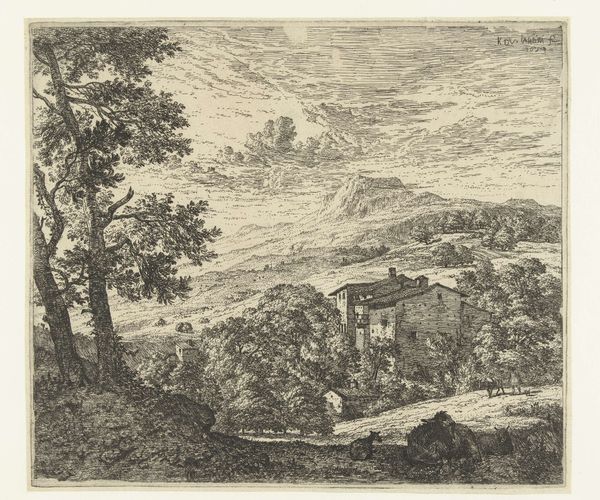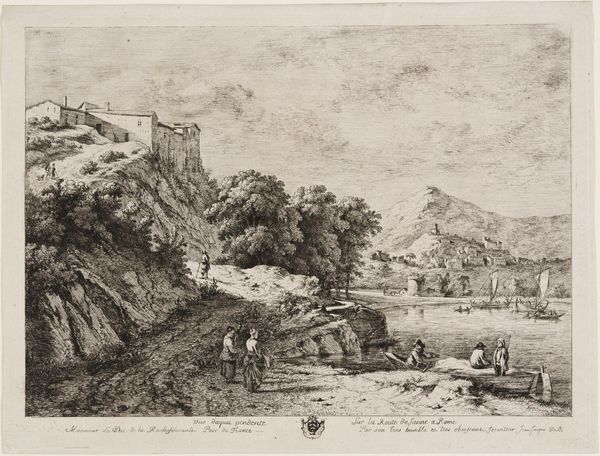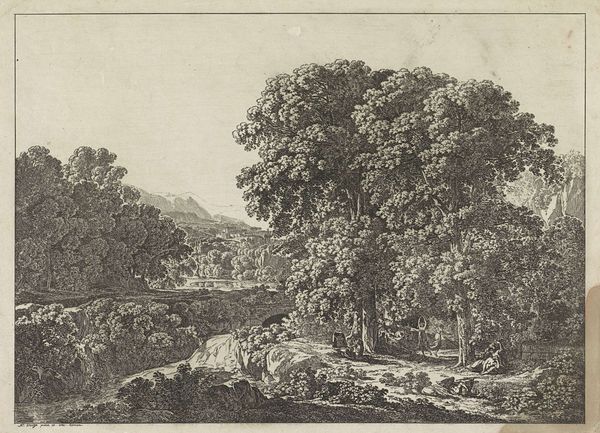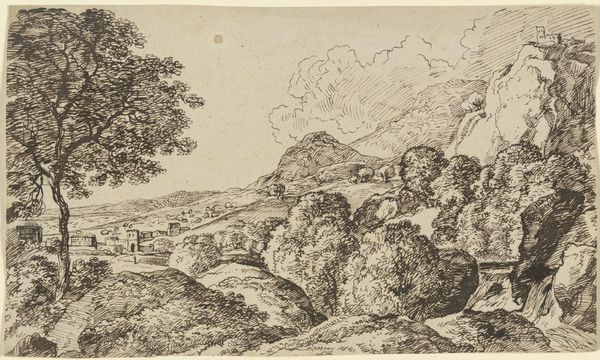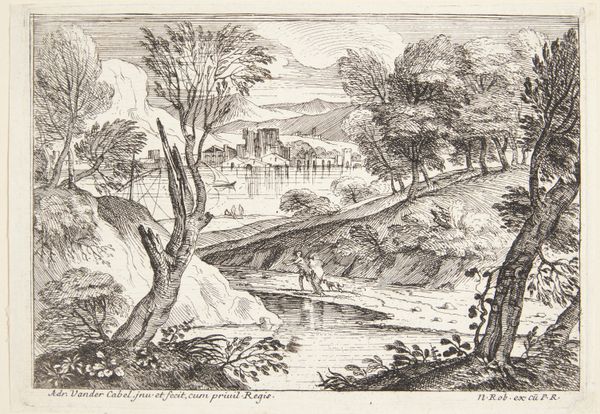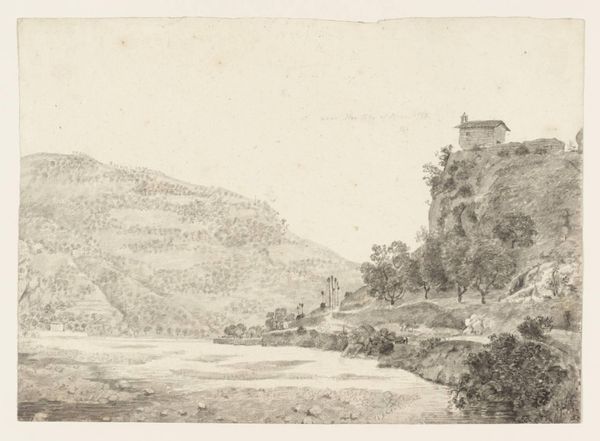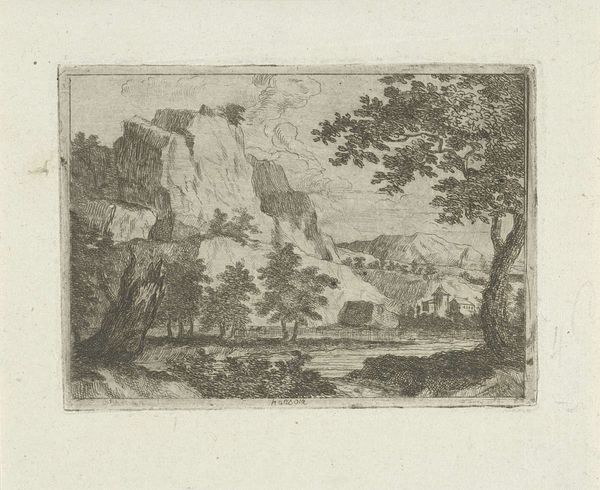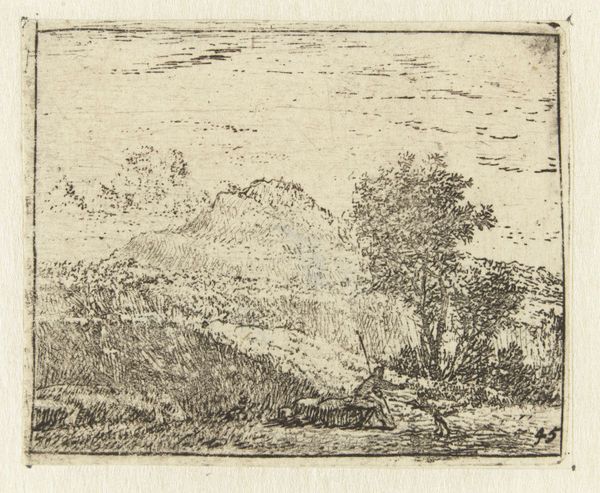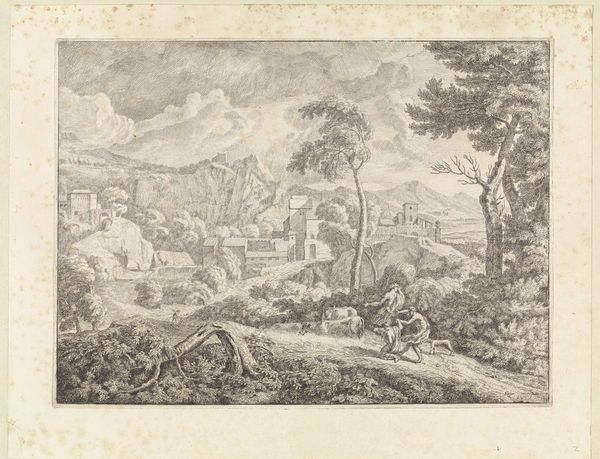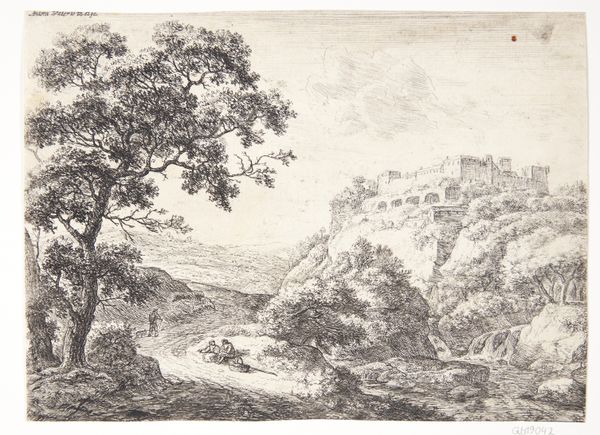
Dimensions: height 104 mm, width 150 mm
Copyright: Rijks Museum: Open Domain
Curator: Welcome. Before us is "River Landscape with Houses and Towers," an etching produced by Jean Joseph Hanson between 1741 and 1799. Editor: It possesses a dreamlike quality. The detail is remarkable, especially considering the medium. It feels… almost like a memory, faded but present. The interplay of light and shadow creates a nice contrast. Curator: Indeed. River landscapes were incredibly popular at the time, tapping into a yearning for the picturesque, even idealized vision of nature and civilization in harmony. The tower especially carries weight. What do you suppose it symbolizes? Editor: A watchtower perhaps, but possibly something of aspiration given how it punctures the skyline as well as connection—towers were historically significant symbols. There's something incredibly pastoral and even safe about this landscape because the details and composition contribute heavily to a sense of narrative. There’s an implication that each element is interconnected. Curator: I agree. The presence of the river itself adds to this feeling of connectedness. Rivers are perennial symbols of time, change, and the flow of life, of course, and in this composition, it quite literally threads everything together, from foreground to background, unifying the disparate elements. Do you think there is a particular aspect that stands out the most, formalistically speaking? Editor: The use of perspective is really compelling because of its softness and lack of crisp definition. It softens what is being seen while letting the gaze settle and travel comfortably. The whole piece seems to be structured toward peace of mind. What I love most, however, is how all these structural pieces work with how the artist frames it, as if we're spying upon it with no means of being seen or felt, so there is an element of disconnect for all its pastoral familiarity. Curator: It's remarkable to me how artists manage to channel something primal through depictions of land, of our first home, and it remains powerful centuries after their passing. Thank you. Editor: Absolutely. It shows the timeless value in analyzing how the old informs our present perceptions.
Comments
No comments
Be the first to comment and join the conversation on the ultimate creative platform.
